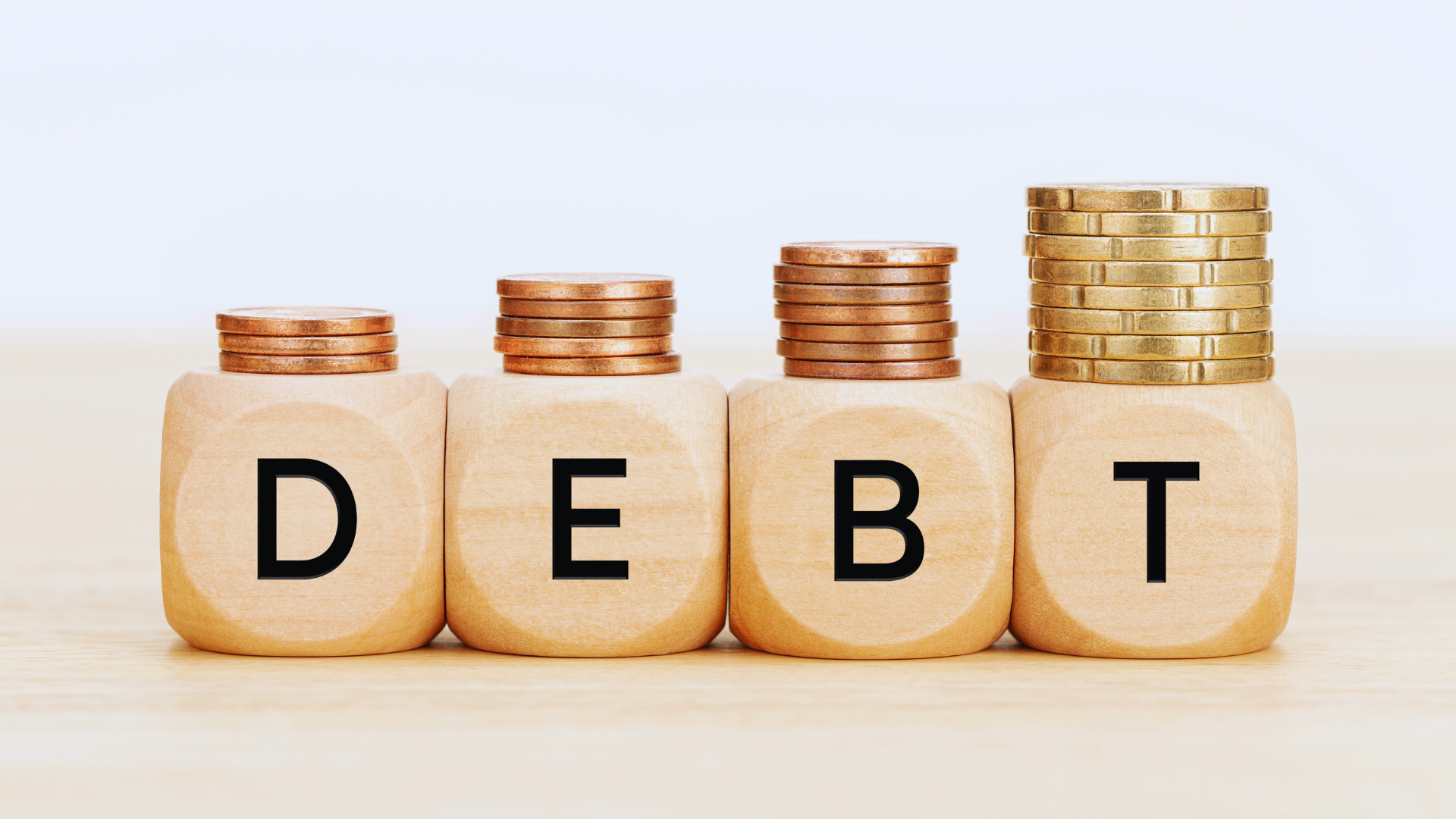Debt is a financial tool that can be beneficial or detrimental, depending on its purpose and management. Good debt enhances a person’s financial situation, leading to increased income or asset growth, while bad debt hinders financial stability and often leads to long-term financial strain. Understanding the distinctions between these two types of debt can empower individuals to make informed financial decisions.
Many people encounter various forms of debt in their lives, from student loans and mortgages to credit card balances. Not all debt is created equal; good debt typically includes investments that appreciate over time, whereas bad debt usually involves high-interest borrowing for immediate and often unnecessary purchases. Recognizing these differences can help you navigate your financial journeys more effectively.
In a world where credit is easily accessible, knowing how to leverage good debt while avoiding bad debt is crucial. Striking the right balance can lead to better financial health and prosperity. Making informed choices about debt can significantly impact your financial future.
Understanding Good Debt and Bad Debt
Good debt and bad debt are two classifications that can significantly impact financial health. Recognizing the differences between them can assist you in making informed borrowing decisions.
What Is Good Debt?
Good debt refers to borrowed money that is seen as an investment in future wealth. This type of debt often finances assets that appreciate or generate income over time. Common examples include student loans, mortgages, and business loans.
- Student Loans: These loans facilitate education and can lead to higher earning potential.
- Mortgages: Financing a home can build equity over time as property values increase.
- Business Loans: These provide capital for entrepreneurs to grow their enterprises, potentially leading to increased profits.
Good debt usually comes with lower interest rates and manageable repayment plans, making it a practical choice for financial growth.
Defining Bad Debt
Bad debt is characterized by borrowing that does not contribute to wealth creation. It often involves high-interest rates and payments that can strain a budget. Common examples include credit card debt and personal loans for non-essential purchases.
- Credit Card Debt: Frequently accrues high-interest rates, especially when balances are not paid in full.
- Personal Loans: They can be tempting for immediate gratification, but often lead to unnecessary financial burdens.
Bad debt can hinder financial stability, becoming a cycle of payments that offers no long-term benefits.
Core Differences Between Good Debt and Bad Debt
The distinction between good and bad debt lies in their impact on an your financial future. Good debt is typically necessary for long-term investment, while bad debt results in high costs with little to no return.
| Criteria | Good Debt | Bad Debt |
| Purpose | Wealth-building | Non-essential spending |
| Interest Rates | Generally lower | Often higher |
| Return on Investment | Potentially high | Minimal or negative |
Understanding these differences aids in making strategic decisions about borrowing, ensuring that debt serves a constructive purpose in your lives.
Key Examples and Types of Debt
Debt can be classified into various forms, each with distinct characteristics. Understanding these types helps in identifying which debts may be beneficial and which might be detrimental to financial health.
Mortgage and Mortgage Debt
A mortgage provides funds to purchase property, secured by the property itself. Typically, this debt is considered good due to the potential for property appreciation.
Key features:
- Down Payment: Typically 3% to 20% of the property’s value.
- Interest Rates: Vary based on creditworthiness, typically lower than unsecured loans.
- Duration: Usually 15 to 30 years.
Homeowners may build equity over time, which can serve as a financial resource. However, failure to keep up with mortgage payments can result in foreclosure, creating significant financial hardship. In such situations, it can be important to consider all the options available to reduce financial loss. One option can be to Sell your home in foreclosure, which might help in settling the debt and preserving some equity. Additionally, seeking advice from professionals can also be beneficial to find guidance that ensures you are making informed decisions during difficult times.
Student Loans and Education Financing
Student loans are designed to cover educational expenses. They can be a form of good debt when they facilitate career growth and increased earning potential post-graduation.
Key aspects include:
- Federal vs. Private Loans: Federal loans often have lower interest rates and more flexible repayment options.
- Grace Period: Borrowers typically benefit from a grace period before repayments start.
- Income-Based Repayment Plans: Available for federal loans, easing the burden for graduates.
However, accumulating excessive debt for education can lead to financial challenges if you struggle to find stable employment in your field.
Business and Small Business Loans
Business loans help entrepreneurs acquire resources to start or grow their ventures. These types of loans can be good debt when they contribute to a profitable enterprise.
Important points to consider:
- Types of Loans: Options include SBA loans, a line of credit, and equipment financing.
- Interest Rates: Rates can vary widely based on credit score and business history.
- Repayment Terms: Can range from short to long term depending on the type of loan.
A successful business can repay its debts while generating profit, but failure to manage these loans can lead to significant financial strain and possible business closure.
Risks and Consequences Associated With Debt
Debt can present various risks and consequences that impact an individual’s financial health. Understanding these aspects is crucial for better debt management and informed decision-making.
Credit Card and High-Interest Debt
Credit card debt, especially high-interest credit card debt, can escalate quickly. Annual percentage rates (APRs) often range from 15% to 25% or more, increasing monthly payments significantly if balances are not paid off promptly. Late payments can trigger additional fees and higher interest rates, creating a cycle of debt.
When you maintain a high credit card balance, it also affects your credit score. High utilization rates can signal risk to potential lenders, making future credit harder to obtain. Finally, accumulating credit card debt can lead to stress and financial strain, impacting daily life.
One practical strategy for borrowers burdened by high-interest credit card balances is consolidating them into a single, lower-rate loan that simplifies payments and can reduce total interest paid. Comparing fixed-rate options, fees, and repayment terms helps avoid unexpected costs while determining whether consolidation will actually save money.
Tools that let you run side-by-side comparisons and estimate monthly payments are particularly useful. For Canadian borrowers, resources that aggregate offers and include loan calculators can clarify trade-offs, like Personal Loans. Taking the time to shop and model scenarios can make debt repayment more predictable and reduce the risk of falling back into high-cost borrowing.
Auto Loans and Car Loans
Auto loans typically come with fixed terms, but they can still contribute to financial risks. Interest rates can vary, and you might find yourself in an upside-down loan situation where you owe more than the vehicle’s worth. This scenario is common if the car depreciates faster than the loan is paid down.
Problems may arise if you face difficulties making monthly payments. Late payments can lead to repossession of the vehicle, harming credit scores further. Additionally, excessive borrowing for luxury vehicles can quickly become bad debt, straining finances.
Debt-to-Income Ratio Impact
The debt-to-income (DTI) ratio is a critical measure of financial health. It compares monthly debt payments to gross monthly income. A high DTI ratio, over 36%, can hinder obtaining new credit. Lenders generally view this as a warning sign of potential repayment difficulties.
When you take on more debt, your DTI ratio increases, which can limit financial flexibility. A high DTI also restricts options for future loans or mortgages. In extreme cases, excessive debt can lead to bankruptcy, resulting in long-term financial consequences.
Managing Debt for Financial Health
Effective debt management is essential for maintaining financial health. You can align your debt with financial goals by employing strategies that prioritize timely payments and positively impact your credit score and net worth.
Aligning Debt With Financial Goals
Debt should serve a purpose in your financial journey. For instance, Half-Price Title Loans may support a necessary large purchase, while a mortgage can build equity over time. Aligning debt with long-term objectives helps you make informed decisions.
To achieve this alignment, they should:
- Identify Financial Goals: Short-term (e.g., buying a car) and long-term goals (e.g., retirement) should be defined.
- Evaluate Current Debt: Analyze existing debt types and their roles in reaching these goals.
- Prioritize Debt Payments: Focus on high-interest debt first while maintaining minimum payments on others.
Strategies for Debt Management
Managing debt involves creating a structured payment plan. You can utilize various strategies to effectively handle your obligations.
Key strategies include:
- Budgeting: Implement a monthly budget to track income and expenses actively. This helps allocate funds to debt repayment.
- Utilizing Apps: Use financial apps to set reminders and automate payments, ensuring timely reductions in principal and interest.
- Consolidation Options: Consider consolidating multiple debts into one lower-interest loan to simplify payments and reduce overall interest.
These strategies foster discipline and enhance financial stability.
Monitoring Credit Score and Net Worth
Regularly monitoring your credit score is crucial. A robust credit score not only reflects responsible debt management but also enables access to better interest rates. If you need short-term funds to avoid missed payments or to consolidate high-interest balances, services like FatCat Loans allow borrowers to quickly compare licensed lenders and apply for installment loans online, helping protect your credit profile by preventing delinquency.
To maintain a healthy credit score, you should:
- Make Timely Payments: Late payments can severely impact the score.
- Limit New Credit Applications: Frequent inquiries can lower the score temporarily.
Monitoring net worth provides insight into financial progress. Assets minus liabilities indicate wealth accumulation. Keeping track of both metrics helps you adjust your financial plans wisely, enabling you to build wealth over time.

